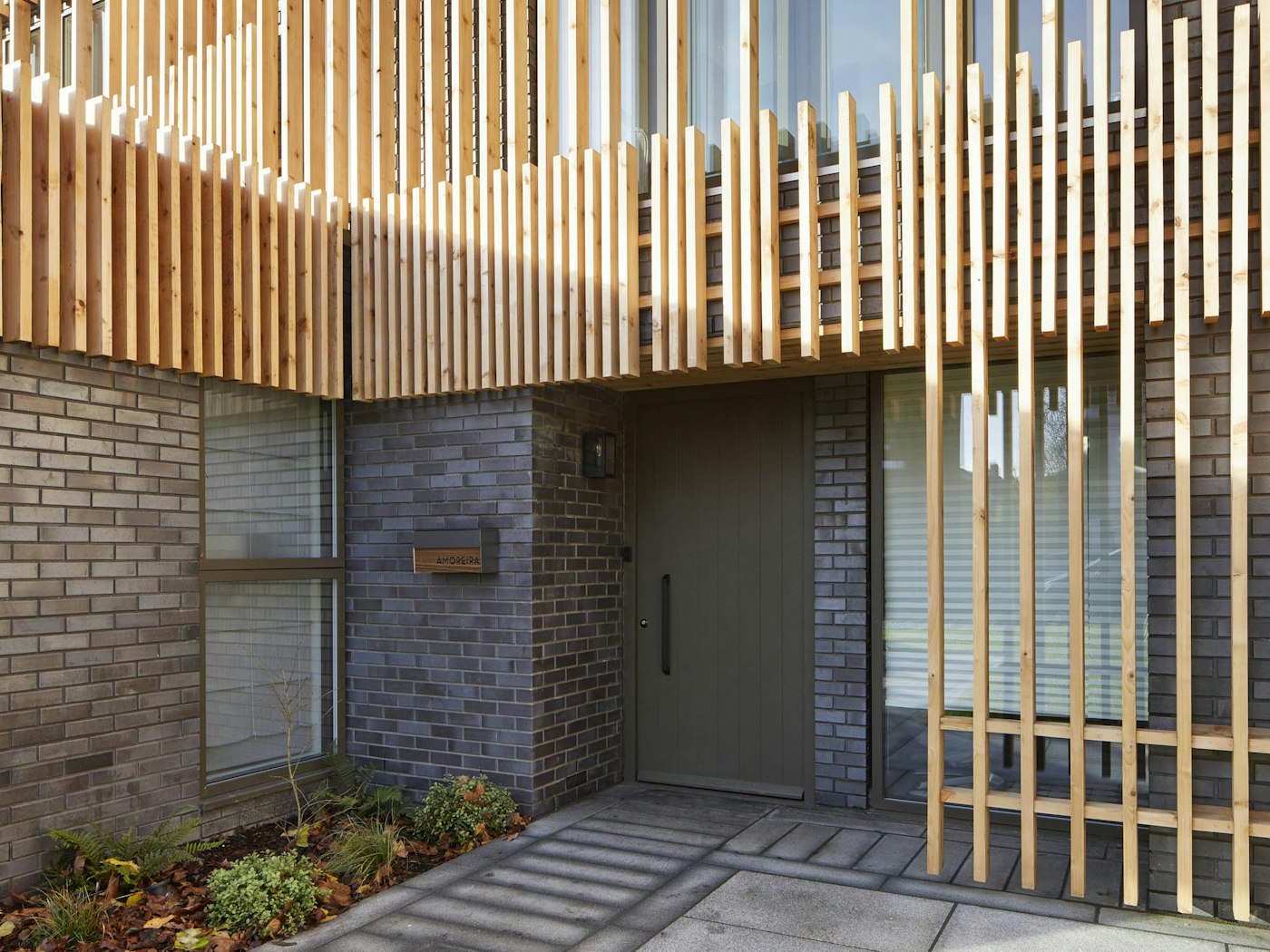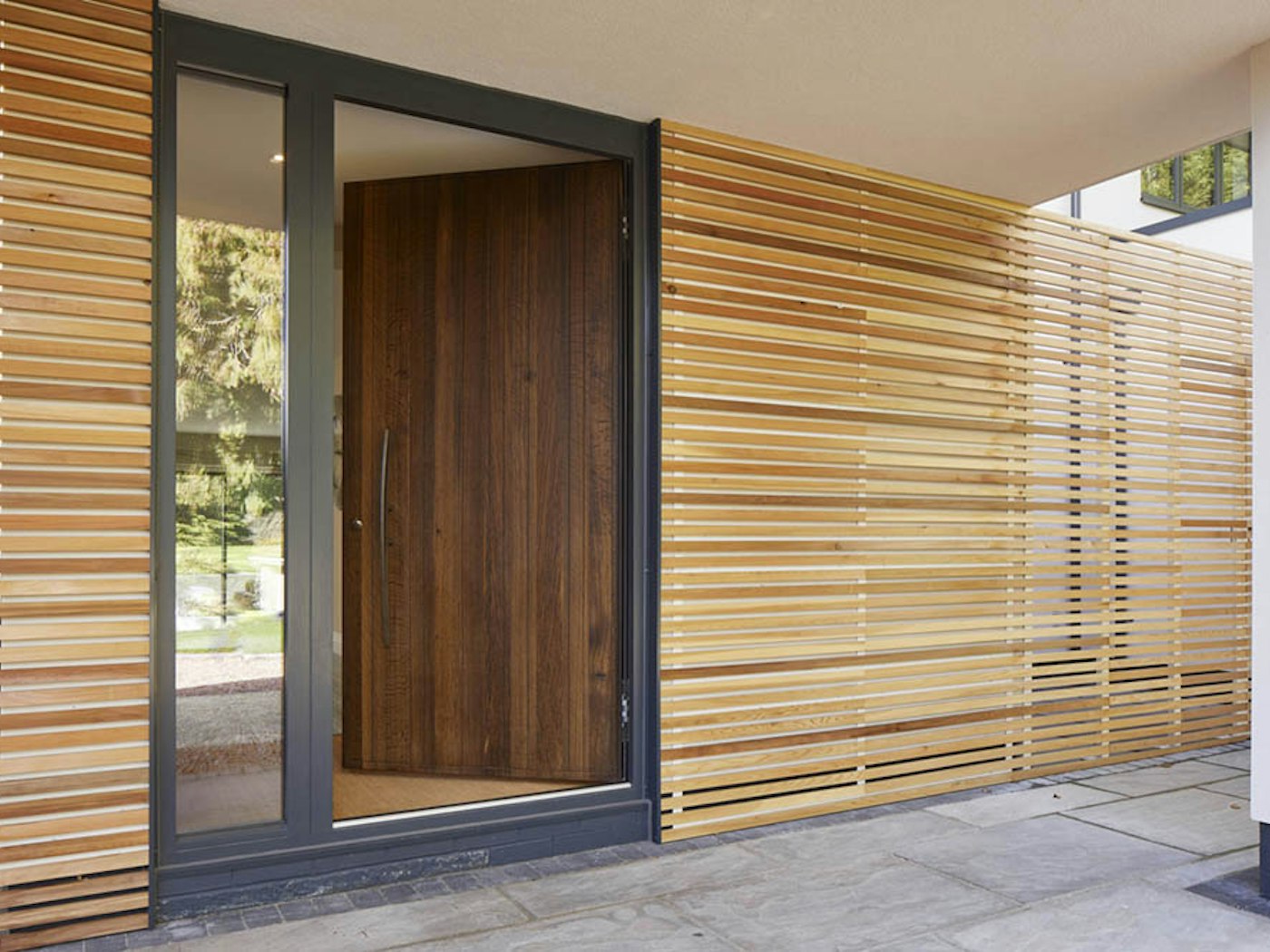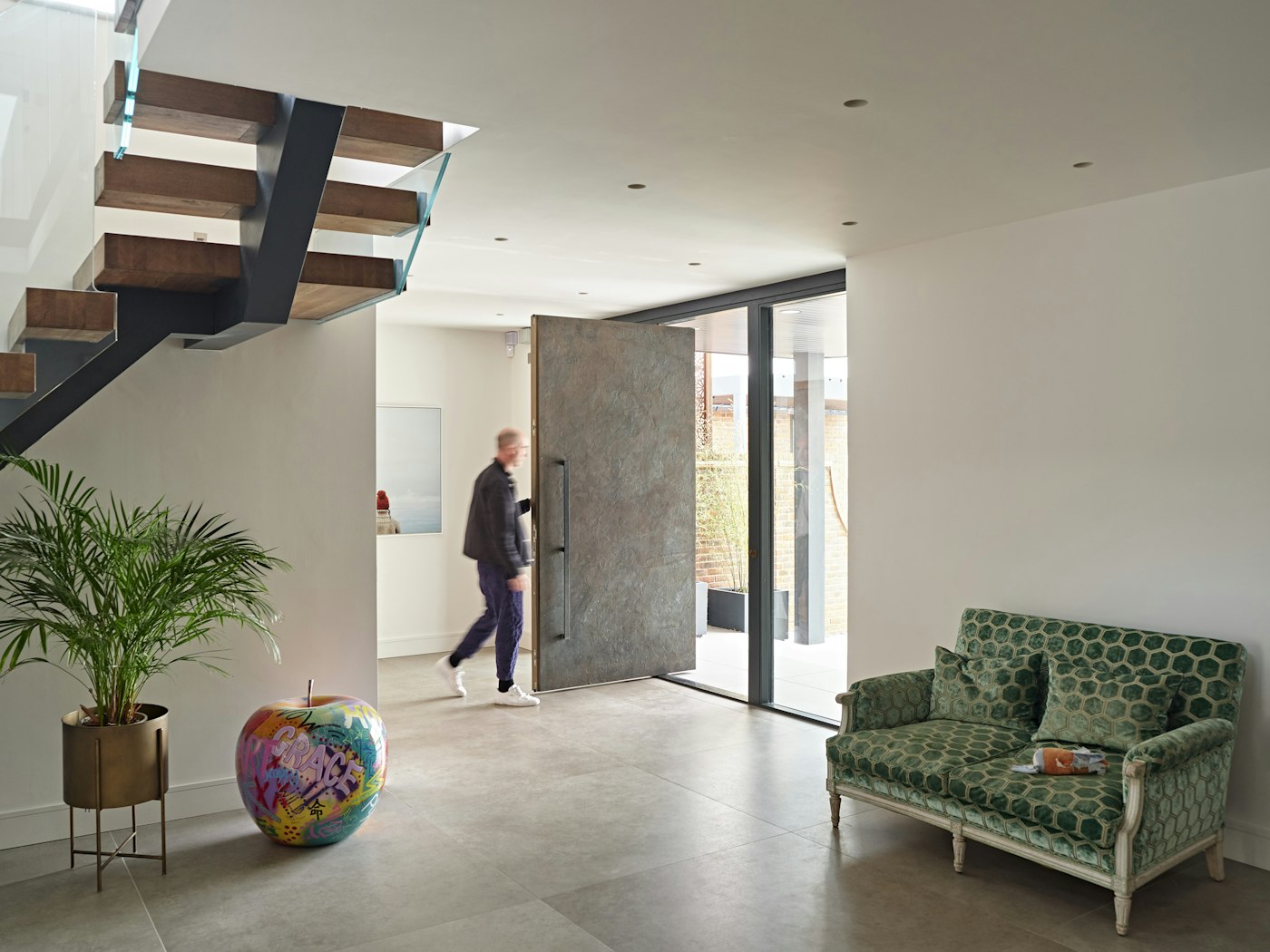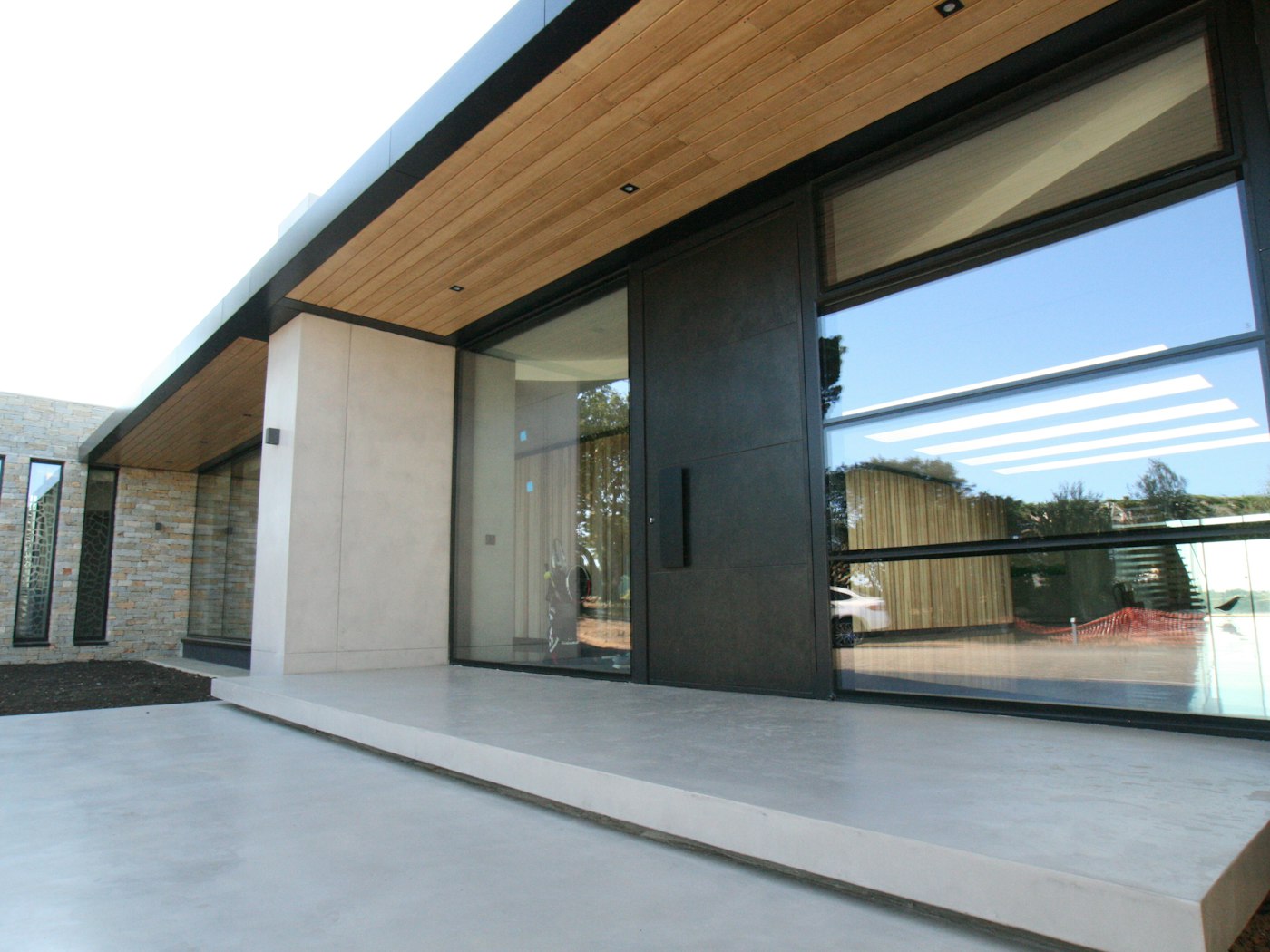By thinking about design, security and performance you’ll choose a front door that enhances your home's appearance, provides excellent insulation, longevity performance, and meets your security requirements. Elizabeth Assaf, Urban Front Co-Founder and Designer, shares her advice.
People don’t realise that your front door is one of the first things you should think about during a renovation or construction project. There are long lead times for front doors, and you need to order quite early on. It can take up to 12 weeks for your door to be delivered, especially if it’s bespoke. Start thinking about your front door when you’ve decided what you’re doing on the external elevation – when you decide you’re having cladding or stone or you’ve decided on grey windows – think about the door at that point because it can change what you choose for the outside of your home.
DESIGN
Whether you choose render, brick or cladding for the outside of your home, it needs to work with your front door. The colour of your windows is also important. Don’t be worried about mixing materials on the external elevation. People often think if I’m having cedar cladding, I should also have a cedar front door but that’s not necessarily the case. If your door is protected by a porch, canopy or overhang, it won’t change colour at the same rate as the cedar cladding on your home – people often let cedar go grey for example – so they could end up different colours anyway.


Cladding as a neutral
If you’ve chosen black cladding, you can choose any front door you like because lots of things work with black. Bear in mind that certain colours are neutrals, black and white for example. Some woods are neutral too. Lots of different textures and materials can work beautifully together. My best advice is to lay out everything together – bricks, cladding, window colour, woods and/or colour choices – and then it’s easier to make your decision.
Glazing and sidelites
It’s a good idea to consider sidelites at this point too. If you’re not having any glazing with your front door, then it’s simple. If you need light in your hallway, you can choose to have a vision panel in your door. If you’d like glazing on either both sides of the door or on one side, that’s important to think about. A sidelites on one side of your door is more contemporary than two sidelites but it depends on the style of your house as to what works best.


Size of door and should it blend in?
The size of the door is important too. People tend to go quite small but the bigger the door the better. If you can go as high as your windows, that works well. If not, see if you can get the height increased and, if you can’t, go wider and don’t worry about it looking dumpy – it will look amazing. What do you care about when you look at your house? Do you want your door to blend in or stand out? If you want to be bold, you could go for a yellow or, if you have black cladding and you want the door to disappear into it, go for black. Then think about the handle – do you want it to be concealed or do you want something that makes a statement like a bronze design?
Architectural details
You also need to think about the detail of how the door frame joins the glazing: do you want to hide the glazing in the frame or do you care about the thickness of the frame? Do you want the door to be flush so there’s no visible frame? There’s so much you can do to make it bespoke to you.
External elevation is important but what’s going on the inside your home needs consideration too. If you’re choosing a cedar door but your internal flooring is oak or you have a walnut staircase, that can make a difference to your final decision. I believe you can mix wood types but it’s vital they all work together. So, when you layout your external elevations, do the same for your internal ones too and bear in mind that, with Urban Front, you can have different finishes on the back and front of your door.
Insurance companies ask for a five-lever mortice deadlock (a latch and a deadlock) or a key operated multipoint lock (3 or 5 point) and a night latch. Urban Front offers a five-point locking system or a motorised lock, which is three points, or a three-point self-lock. Most people don’t really need more than a five-point locking system operated by a key on the outside and a thumb turn on the inside. If you’d prefer a higher security system, or fingerprint entry, you need motorised locking, which means the door locks as you close it because it’s connected to an electric supply. Or there’s mechanical self-lock which, when you close the door, locks itself rather than you having to remember to do it.
With a five-point lock, you’re giving the door strength at the corners and in the middle, making it harder for a burglar to find a weak point. If you hear people talk about Secure by Design, this means the lock/door is tested to a certain level and that testing is proven to reduce crime by 70 per cent – therefore it takes the burglar a lot longer to get into your door – that’s basically what you’re trying to do with your locking system. (The whole door is deemed Secure by Design – no one item can be as the door is tested as a whole). To see more about this go to: High security front doors - Secure by Design doors | Urban Front
Clients ask whether fingerprint entry is gimmicky. I have fingerprint entry on my door, and I never have to carry a key. If you have younger children or teenagers, you don’t have to worry about lost keys. Please note, the system can be overridden by a key if necessary.
Clients building new homes often want to have their locking connected to their smart home system and you can do that. With your fingerprint entry, you can connect to your app and open your front door from anywhere in the world (as long as you have Wi-Fi). If you want certain people to come in at certain times, your cleaner for example, you can add that to your app too.
When I talk about performance, I’m referring to the life of the door. If you buy a door from Urban Front, it will last you between 30 and 40 years as long as you maintain it. This means different things depending on your door. For instance, if you have locks and hinges, they’ll need oiling once every few years. If you have a wood door, say oak, you’ll need to oil or lacquer it regularly. If your door is protected from the weather by an overhang or porch, it will last longer between applications.
Performance also differs between pivot and hinged doors. For example, if you choose a pivot door, it won’t be as weather sealed as a hinge door. If you have a pivot door, your hallway will feel cooler so you need to ask yourself whether that will bother you. Lots of our clients prefer the action of the pivot door to the hinge and choose it regardless of this. However, if your house is very insulated, a pivot door might not be the best choice for you.
Performance is about the kind of door you buy, how much maintenance you’re willing to do and how long do you want that door to last. When you buy the door, if you know you won’t oil it every six months, maybe wood isn’t the best choice for you? Do you want the texture and beauty of oak, or would you rather have a door that you don’t have to touch for seven years? These are some of the things that you need to consider when thinking about the performance of your door.
A lot of houses being built now are so highly insulated that you must buy specific doors for them that have been certified to have a certain U value, which measures how effective a material is as an insulator. A pivot door won’t be suitable for these houses but it’s not just about how the door fits into the frame, it’s also about how the frame fits into the building – air can escape in this area too. If your property is going to be air tested, the U value of your door is important. The minimum most people require is 1.4 but a highly insulated door is 0.79 (the lower the number the better!). Urban Front makes bespoke Passive certified doors at this U Value and we can also make highly insulated doors for houses that aren’t being certified Passive too in large bespoke sizes, just ask one of our team for more info on this.
For help choosing the right door for your home, Urban Front offers a free, no obligation design service.